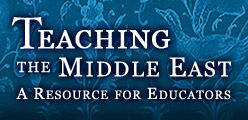Examining Stereotypes
 1 of 1
1 of 1 
Are Logographic Writing Systems Difficult and Primitive Compared to Alphabets?
Users of alphabetic scripts tend to view writing systems that are logographically based as inordinately complex and, moreover, as representing a more primitive form of writing. Our alphabet, for instance, has 26 characters, and early alphabets had similar numbers of signs. In contrast, the earliest Mesopotamian cuneiform employs about 1,200 signs (later cuneiform has about half that number) and Middle Egyptian has a sign inventory of about 700 signs, while Chinese, which is heavily logographic, has thousands of signs. It is natural to ask why anyone, if given the choice, would choose to use a logographic system, with all of the memorization it entails, rather than an alphabet, which is seemingly a more streamlined and efficient means of communication. In fact, in theory, each writing system — the Mesopotamian, Egyptian, as well as the Chinese — could have simplified, abandoning its logographic and semantic origins, and developing into a purely phonetic system. Such a development would have greatly simplified the sign inventories of each: Sumerian and Chinese could have conveyed language with entirely syllabic signs and Egyptian could have done the same with its small class of uni-consonantal graphs. Certainly, in all these cases there was the potential for this — but this development never took place. The explanation lies in the fact that there are overriding cultural and ideological pressures involved in the choice of writing. Many people, for instance, identify culturally with a particular script. Further, writing systems are inherently conservative; once they reach their stable, mature phases they tend to persevere over long periods, resisting large-scale changes and maintaining their basic organizing principles. And in cultures of highly restricted literacy, as is the case in the ancient Middle East, for the elites who control writing, there are naturally advantages to keeping writing complex and arcane.
But there are other, compelling linguistic reasons for maintaining logographic writing. Logography tends to mask alternations in pronunciation of morphemes, the basic elements of language. Logographic systems allow writers to be economical and write only the basic or underlying form of a morpheme. Readers who are native speakers automatically produce the appropriate pronunciation by means of the same phonological rules that they employ in producing and interpreting speech.
There are further advantages to logography. One is that it provides a common written form for varying dialects and various historical stages of a language. Dialects may diverge substantially in terms of phonology, but they often share the same basic forms of morphemes. Logographic scripts, which generally express these basic forms, can therefore be useful for expressing a wide range of dialects. The maintenance of logography in Chinese writing today, for instance, allows not only for distinguishing homonyms, but also for the reading of older documents as well as providing readers with a common written representation for many different dialects. Finally, as modern Japan demonstrates, substantial logography, while seeming to complicate a writing system particularly in the eyes of alphabet users, in no way diminishes literacy rates.
Supporting Links:
“Cuneiform Script.” Wikipedia. Link to resource![]() (accessed May 13, 2010).
(accessed May 13, 2010).
“Writing Systems.” AncientScripts.com: A compendium of worldwide writing systems from prehistory to today. Lawrence Lo. Link to resource![]() (accessed May 13, 2010).
(accessed May 13, 2010).
“Egyptian Language.” Wikipedia. Link to resource![]() (accessed May 13, 2010).
(accessed May 13, 2010).

 Christopher Woods
Christopher Woods
Associate Professor of Sumerology, University of Chicago
Guiding Questions
1. The culture of highly restricted literacy in ancient Middle Eastern cultures impacted the development of writing by keeping it complex and used primarily by the elite. Our society values widespread literacy and those who do not learn to read and write are often marginalized. What aspects of ancient and modern societies impact the various literacy requirements for its members?
2. Compare and contrast the benefits of using alphabetic and logographic forms of writing. Which do you prefer and why?
3. Due to the complexities of logographic forms of writing, what are the implications for Westerners in learning modern logographic languages, such as Chinese?


 Print Page
Print Page
